Identifying
late blight
Dossier Phytophthora-resistance (late blight)
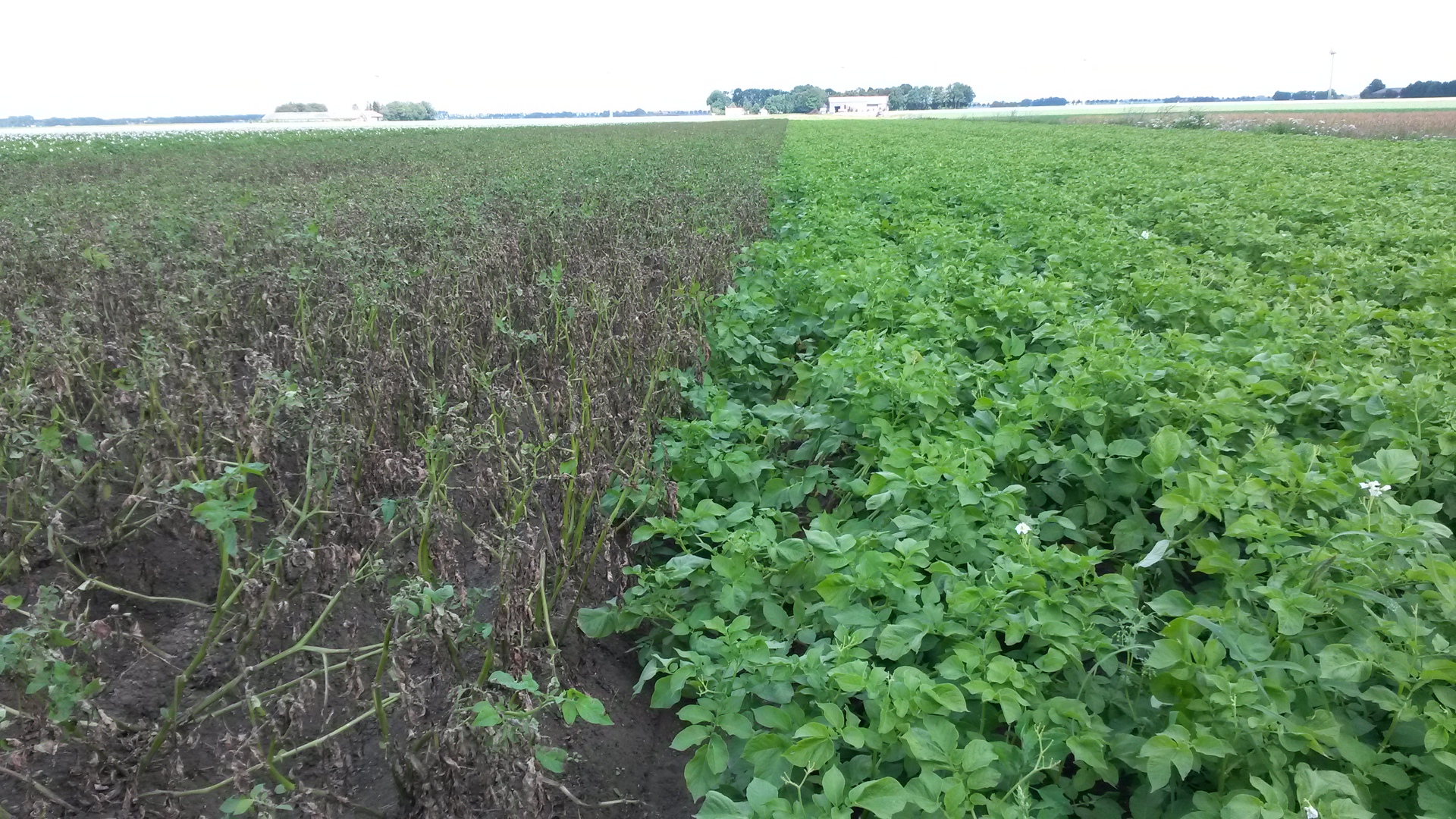
Late blight / Phytophthora reaction types
Here you will find descriptions of various types of reaction to late blight (Phytophthora infestans) in potato varieties. Resistance in organic crop production is crucial for obtaining acceptable yield and quality. Agrico has an ever growing portfolio of varieties with high scores for late blight resistance. But despite this, there is still a chance that these varieties will show various types of reaction during the growth cycle.
There are many different strains of this disease, each showing different spectra of aggressiveness and virulence. By comparing your crop with the disease symptoms shown in this leaflet, you can establish what action needs to be taken.
Hypersensitivity response in a resistant variety
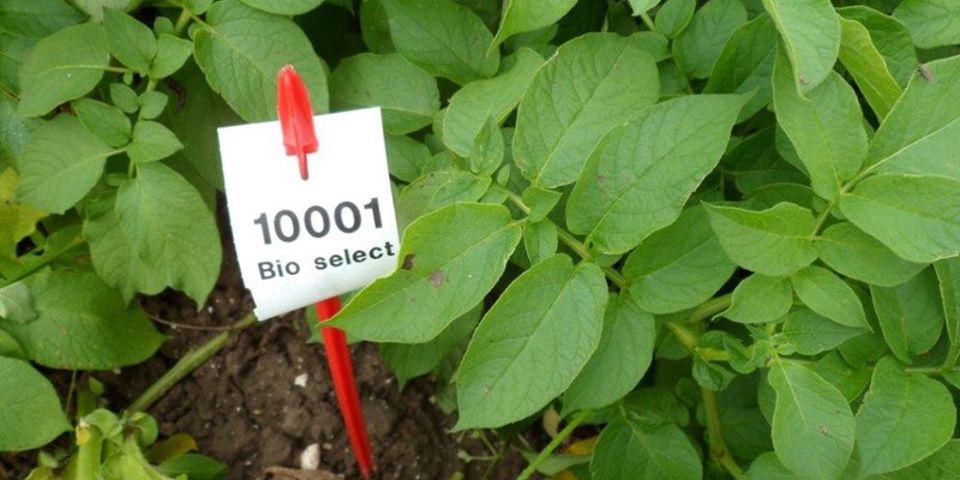
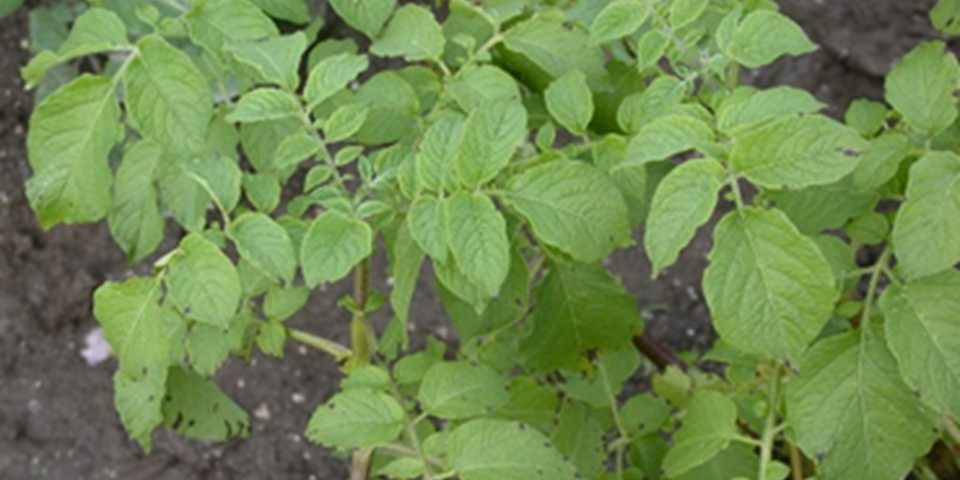
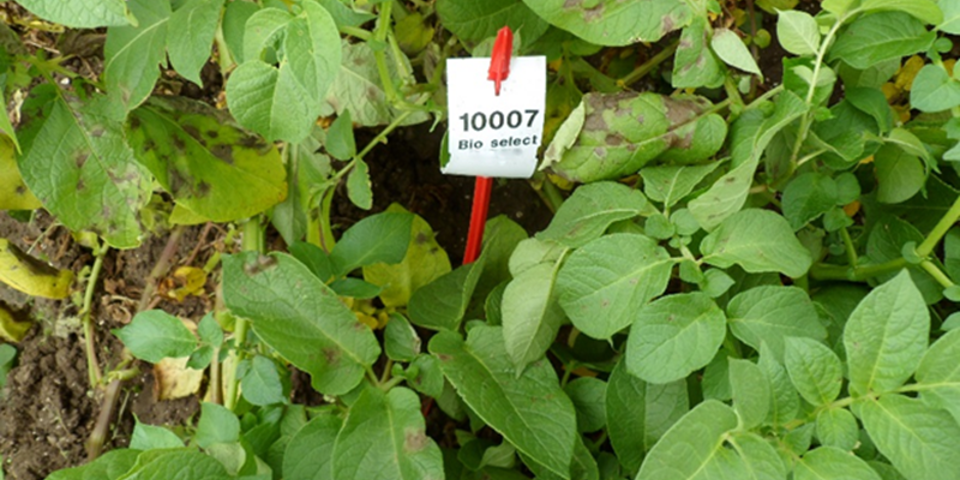
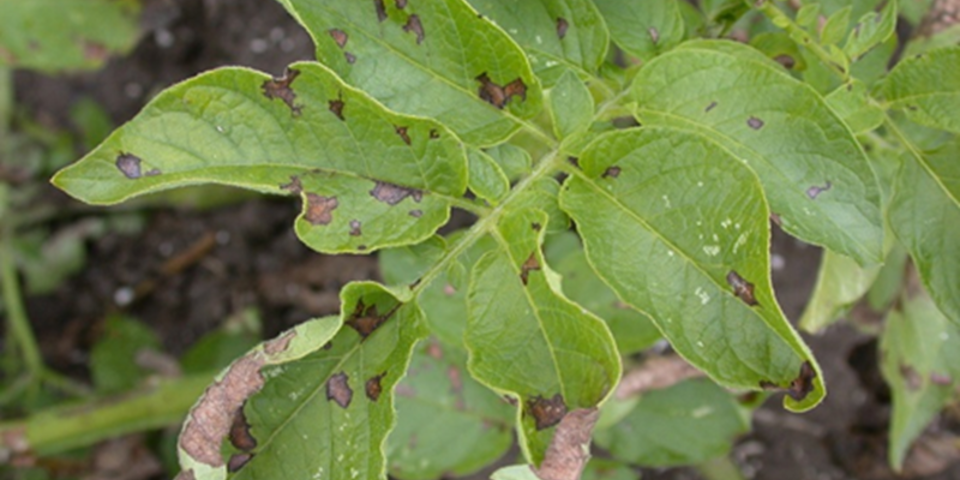
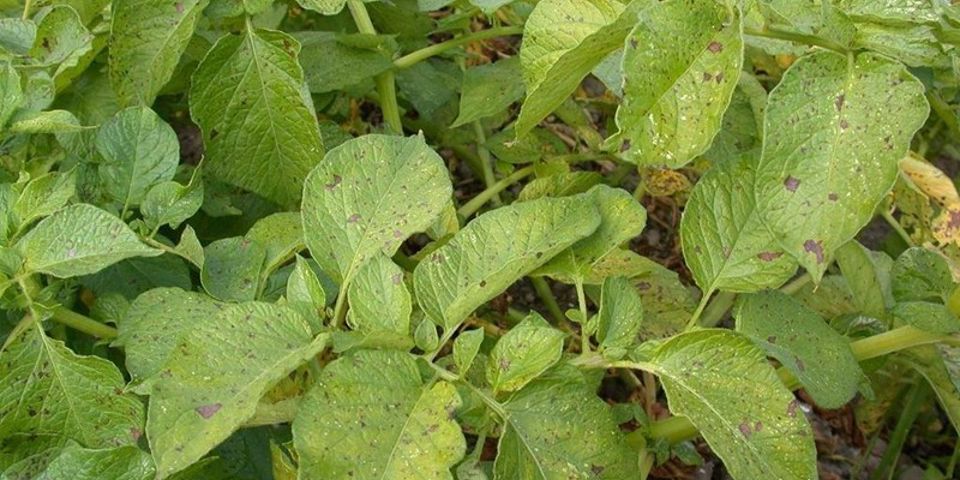
These images are of potato plants with solid, functional resistance. The foliage is showing hypersensitivity in the form of brown lesions (blotches) and there is no difference between the adaxial and abaxial side of the leaf. Therefore, there is no greyish-white mould (sporulation) visible on the abaxial side in this case.
As resistance is in operation in these varieties, the cells affected by late blight are actively destroyed by the plant, which leads to fatal starvation of the pathogen. However, this hypersensitivity reaction looks very similar to the reaction that is seen when Alternaria solani is causing early blight. Early blight can be distinguished from late blight by the presence of small brown lesions in concentric rings that look similar to tree growth rings.
Late blight without sporulation
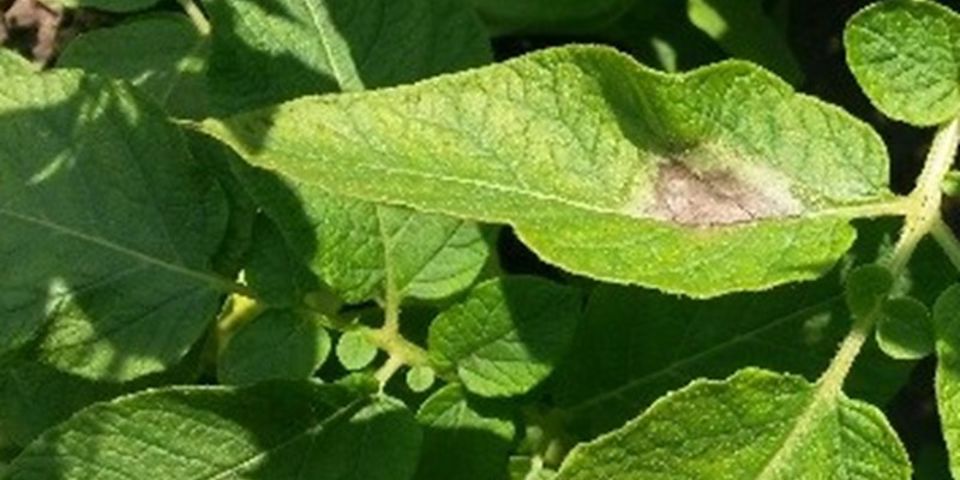
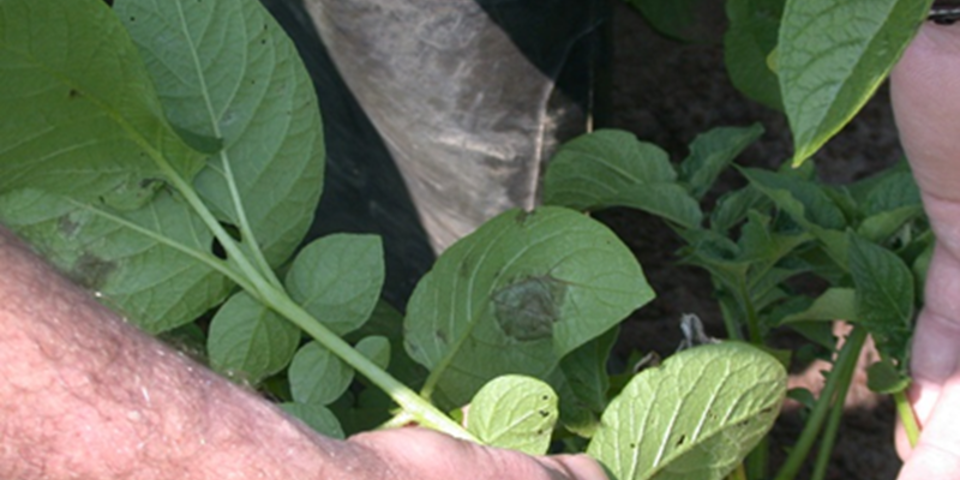
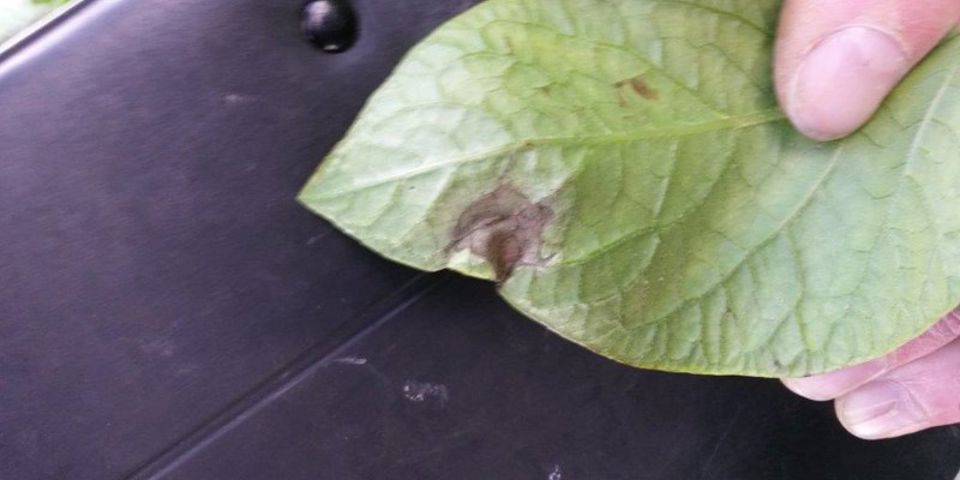
Here we can see a late blight infection. To check whether the Phytophthora is still active, check the abaxial side of the leaf for white mould.
If there is a brown blotch on the abaxial side of the leaf but the leaf is dry and there is no mould present, this means the leaf is showing a reaction but the resistance gene is still functional. You don’t need to defoliate the crop in this case. The foliage is infected with late blight but the variety’s resistance has prevented sporulation.
It may also happen that susceptible varieties become infected with late blight but due to a period of hot, dry weather with high UV levels, the mould dries out and does not sporulate. The infection is kept in check in these circumstances. However, you still need to keep a close eye on the crop. If the pressure from late blight starts to build again and the conditions favour the disease, any Phytophthora present will attack the crop fast. A late blight infection is easy to spot (visible sporulation), especially in the morning in dewy conditions. If there are no visible signs of sporulation in the morning, there is no need for defoliation.
Mildly sporulating reaction in a mature crop
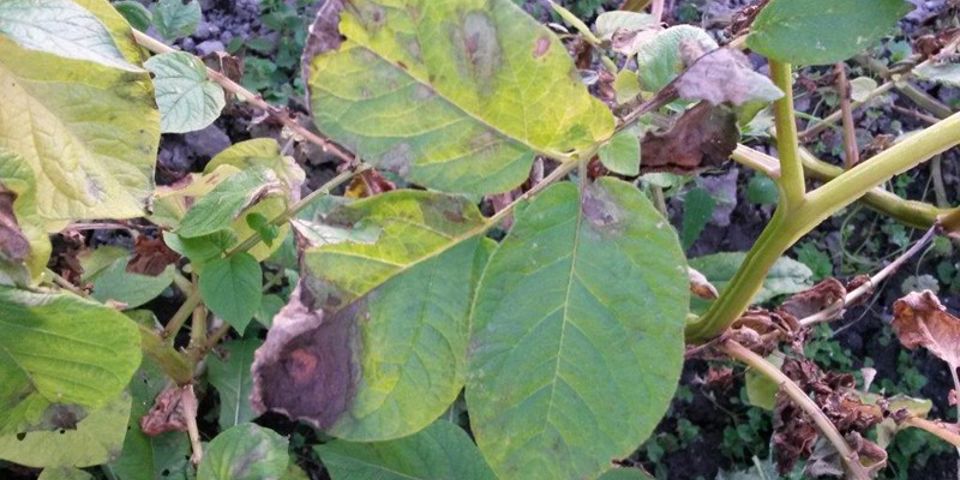
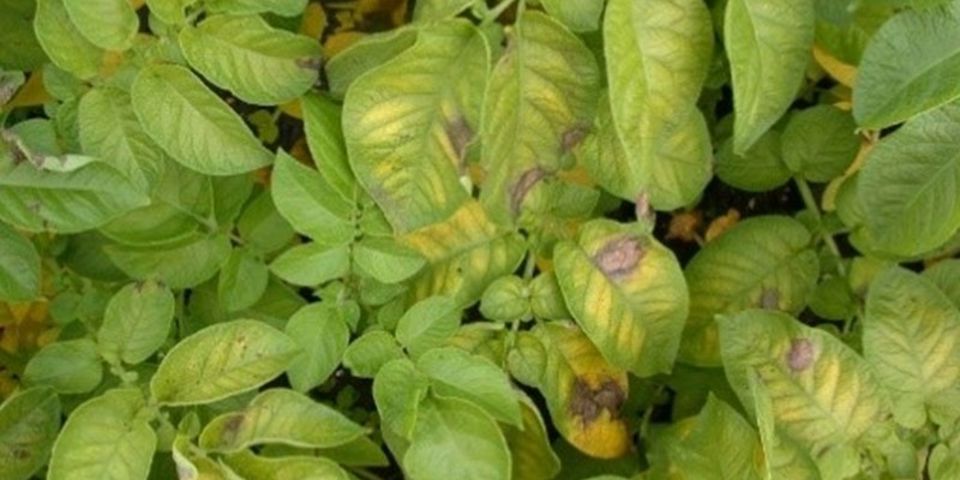
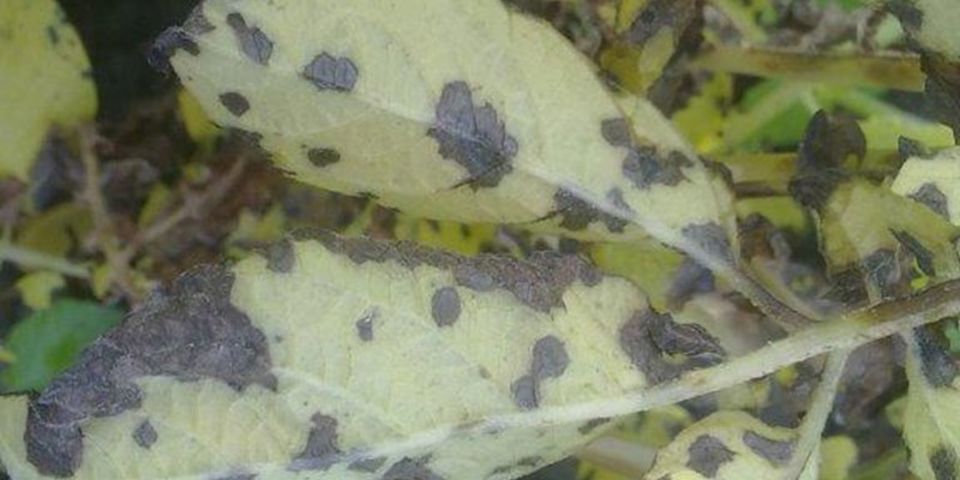
Hier zien we afrijpende en minder vitale gewassen met een licht sporulerende reactie. Doordat het gewas nog maar weinig in weerstand investeert, is het beeld heftig. De Phytophthora toont zich vooral in de onderste bladen (dit zijn vaak de bladen die vergelen). Ondanks het beeld, is de resistentie niet doorbroken. De knolresistentie is nog van kracht. Met dit beeld is er geen directe noodzaak om voor Phytophthora-aantasting te branden. Echter, het gaat om een afrijpend gewas, dus zal loofdoding niet lang meer op zich laten wachten. De meeste Phytophthora-resistente rassen hebben een goede knolresistentie, maar niet alle rassen. Wees daarom alert op het knolresistentiecijfer van het betreffende ras. When you see these symptoms, you don’t need to defoliate the crop straight away to destroy the infection. Because the crop is already maturing, it won’t be long until it defoliates naturally. Most late blight resistant varieties also have good tuber resistance, with a few exceptions. So it’s important to be aware of each variety’s tuber resistance score.
Late blight infection with sporulation in a resistant variety
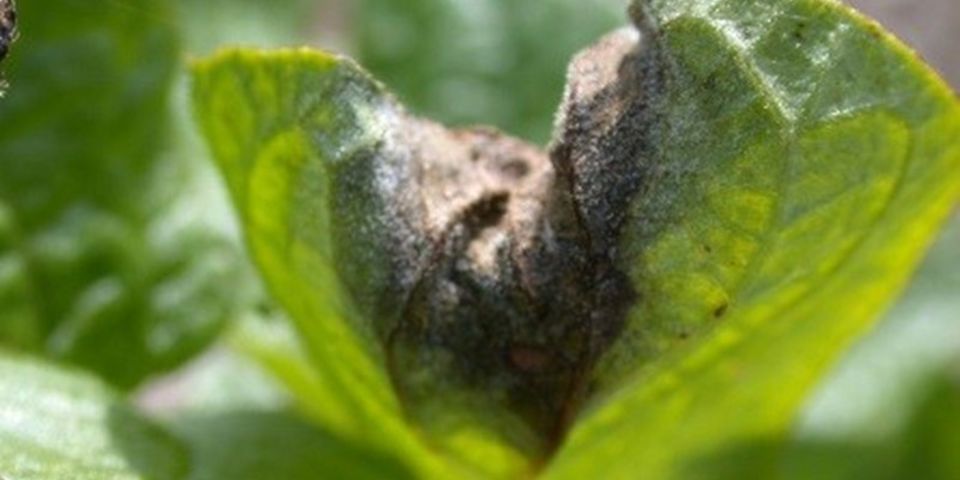
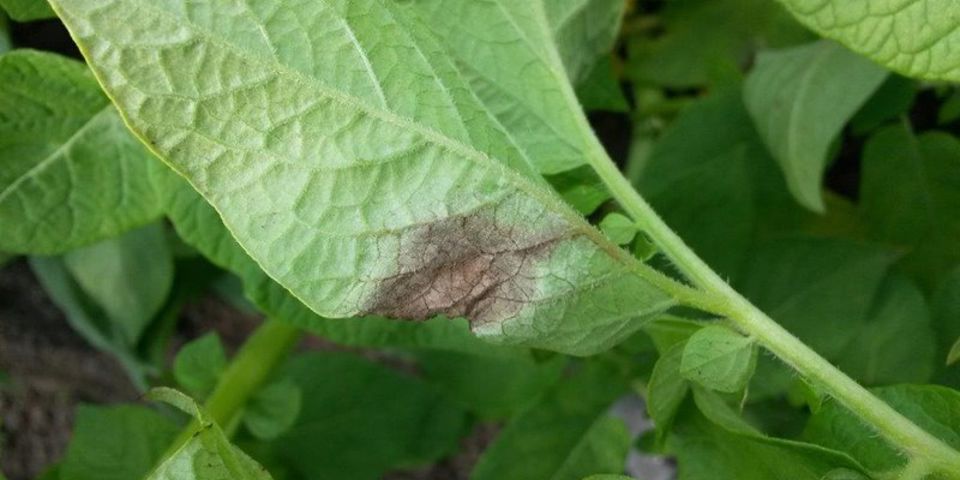
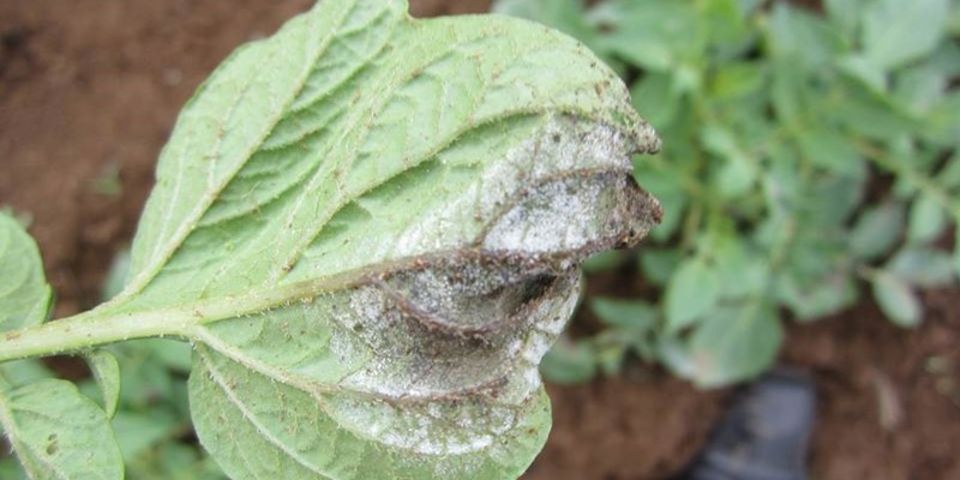
Here we can see dark lesions on the leaves with clear greyish-white mould on the underside in the zone between green and dead tissue. For resistant varieties, this means that the resistance to that particular strain of Phytophthora will not hold up during the rest of the growing season. It is now important to defoliate promptly because Phytophthora will destroy the canopy easily and may also cause rot in tubers. It is by no means certain that the same resistance breaking strain of Phytophthora will be active again in future years in your area. This means that resistance in varieties can be re-used year after year in a similar fashion.
